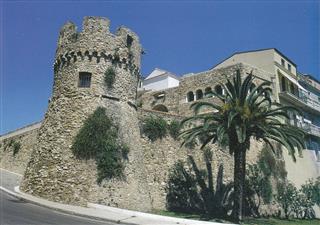Castelli del Molise
Il castello Svevo di Termoli
|
Il castello di Termoli, così come appare oggi, rende bene l'idea
del ruolo di punta di diamante dell'inappuntabile sistema difensivo della città
voluto da Federico II di Svevia nel XIII secolo. Sorto sui resti di una
fortificazione del VI secolo, perfezionata e sviluppata dai Normanni fu
ulteriormente modificato dall'imperatore svevo.
Fu particolarmente danneggiato dal terremoto del 1456 e poi
dall'attacco dei Turchi nel 1567 per essere ripristinato nello stesso XVI secolo
con l'aggiunta di alcuni accorgimenti: la torre superiore fu
|
 |
dotata di ponte levatoio e isolata da quella inferiore, le
feritoie furono allargate per consentire l'uso delle armi da fuoco. Nel XVII
secolo l'edificio non era più concepito come fortezza bensì come prigione.
Il castello, che attualmente è sede di una stazione meteorologica
dell'Aeronautica Militare, è costituito da una parte inferiore a tronco di
piramide, con quattro torrette cilindriche angolari, a cui è sovrapposta una più
piccola torre quadrangolare.
Termoli Swabian Castle
 |
The castle still bears witness to the former town unique
defensive system ordered by Frederick II in the 13th century. It was built on
the remnants of a 6th century stronghold, which both the Normans and the Swabian
Emperor enlarged and altered.
It was seriously damaged by an earthquake in 1456 and by a
Turkish incursion in 1567. It was restored in the 16th century, undergoing some
additions: the upper tower was fitted with a drawbridge and it was separated
from the lowe tower.
|
The slits were enlarged to allow the use of firearms. The
stronghold was turned into a jail in the 17th century.
The castle, shaped as a truncated pyramid, was fitted with four
cylindrical corner turrets and a smaller superimposed quadrangular tower.
Nowadays it houses an Air Force weather station.